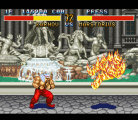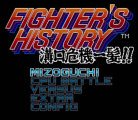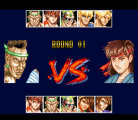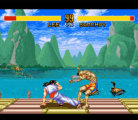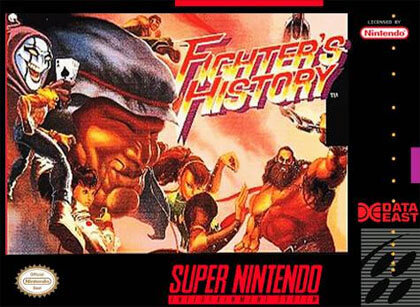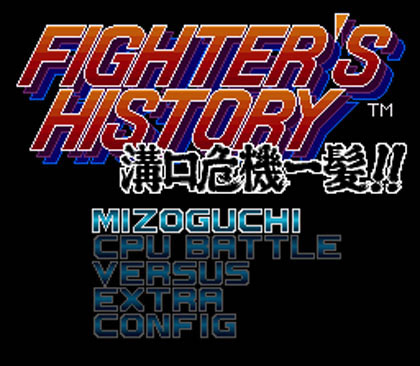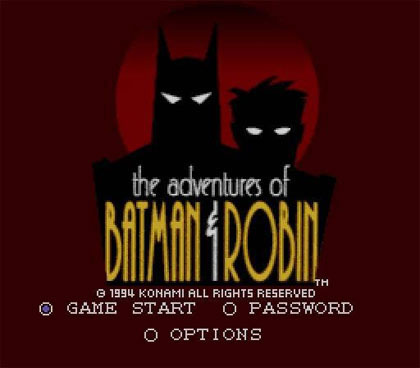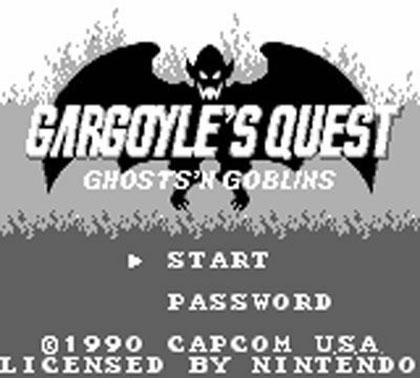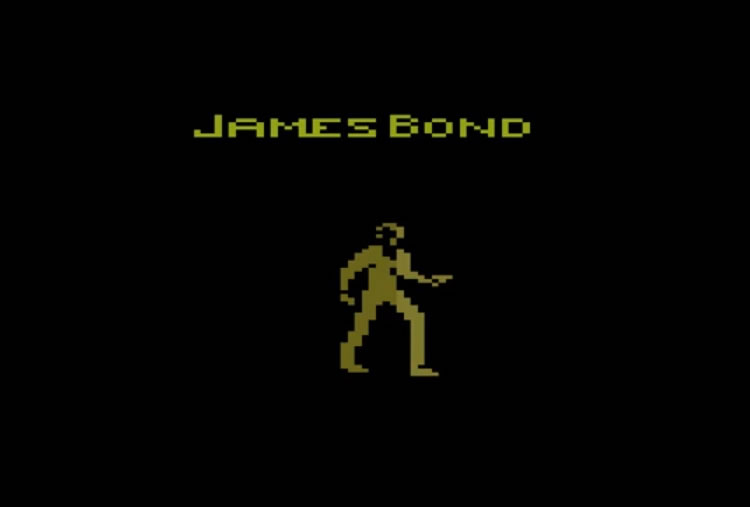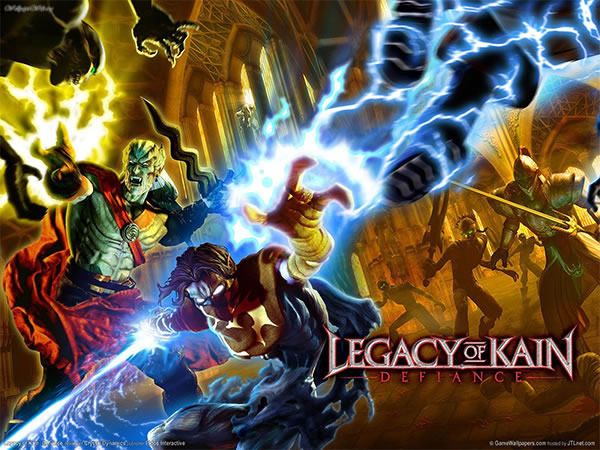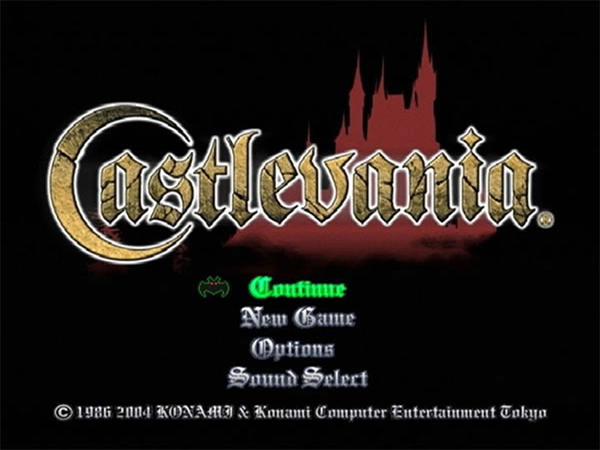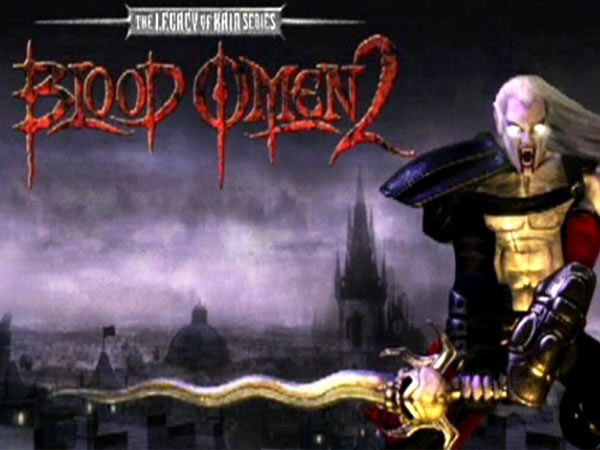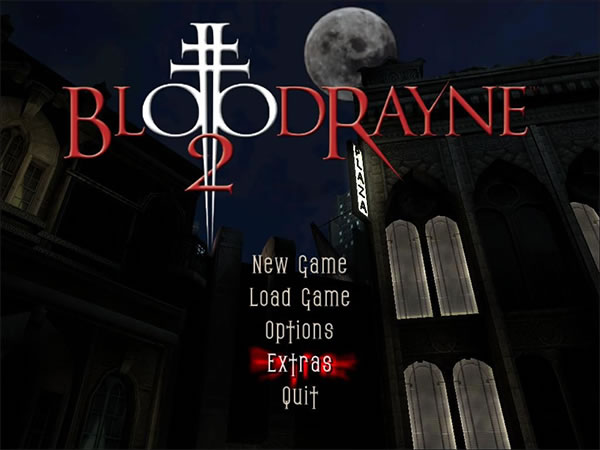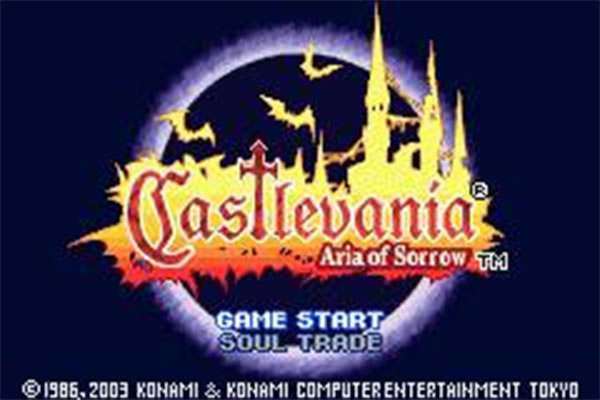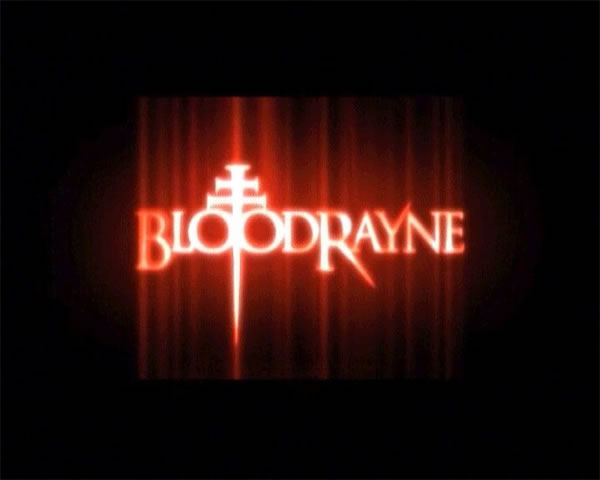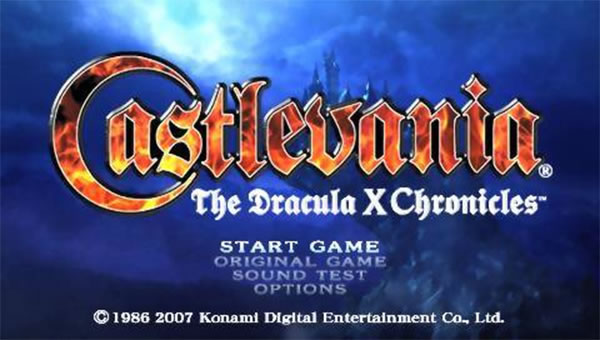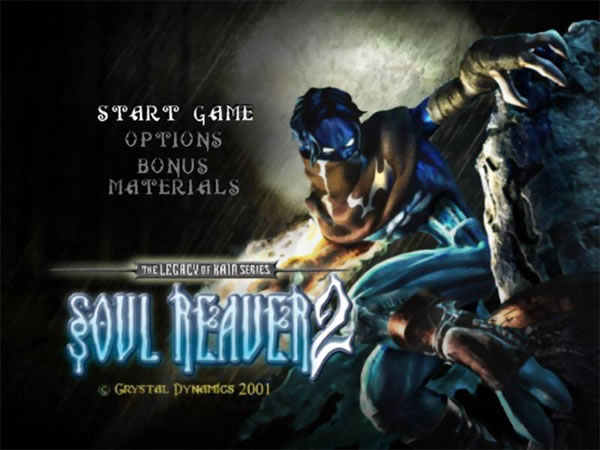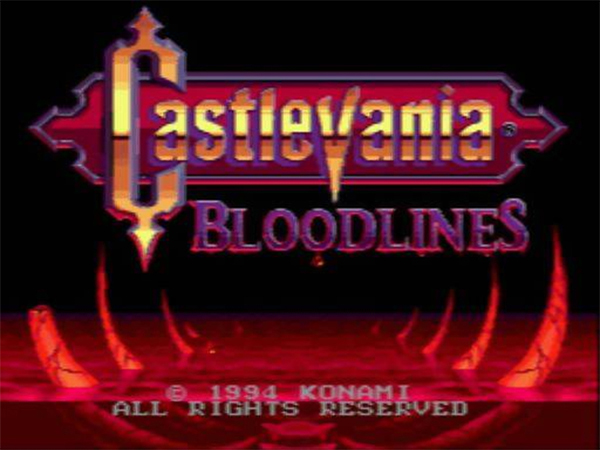- CLASSIC MAGAZINES
- REVIEW CREW
A show recapping what critics thought back
when classic games first came out! - NEXT GENERATION'S BEST & WORST
From the worst 1-star reviews to the best
5-stars can offer, this is Next Generation! - NINTENDO POWER (ARCHIVE)
Experience a variety of shows looking at the
often baffling history of Nintendo Power! - MAGAZINE RETROSPECTIVE
We're looking at the absolutely true history of
some of the most iconic game magazines ever! - SUPER PLAY'S TOP 600
The longest and most ambitious Super NES
countdown on the internet! - THEY SAID WHAT?
Debunking predictions and gossip found
in classic video game magazines! - NEXT GENERATION UNCOVERED
Cyril is back in this spin-off series, featuring the
cover critic review the art of Next Generation! - HARDCORE GAMER MAGAZING (PDF ISSUES)
Download all 36 issues of Hardcore Gamer
Magazine and relive the fun in PDF form!
- REVIEW CREW
- ELECTRONIC GAMING MONTHLY
- ELECTRONIC GAMING MONTHLY RANKS
From Mario to Sonic to Street Fighter, EGM
ranks classic game franchises and consoles! - ELECTRONIC GAMING MONTHLY BEST & WORST
Counting down EGM’s best and worst reviews
going year by year, from 1989 – 2009! - ELECTRONIC GAMING BEST & WORST AWARDS
11-part video series chronicling the ups and
downs of EGM’s Best & Worst Awards!
- ELECTRONIC GAMING MONTHLY RANKS
- GAME HISTORY
- GAME OVER: STORY BREAKDOWNS
Long-running series breaking down game
stories and analyzing their endings! - A BRIEF HISTORY OF GAMING w/ [NAME HERE]
Real history presented in a fun and pithy
format from a variety of game historians! - THE BLACK SHEEP
A series looking back at the black sheep
entries in popular game franchises! - INSTANT EXPERT
Everything you could possibly want to know
about a wide variety of gaming topics! - FREEZE FRAME
When something familiar happens in the games
industry, we're there to take a picture! - I'VE GOT YOUR NUMBER
Learn real video game history through a series
of number-themed episodes, starting at zero! - GREAT MOMENTS IN BAD ACTING
A joyous celebration of some of gaming's
absolute worst voice acting!
- GAME OVER: STORY BREAKDOWNS
- POPULAR SHOWS
- DG NEWS w/ LORNE RISELEY
Newsman Lorne Riseley hosts a regular
series looking at the hottest gaming news! - REVIEW REWIND
Cyril replays a game he reviewed 10+ years
ago to see if he got it right or wrong! - ON-RUNNING FEUDS
Defunct Games' longest-running show, with
editorials, observations and other fun oddities! - DEFUNCT GAMES QUIZ (ARCHIVE)
From online quizzes to game shows, we're
putting your video game knowledge to the test!- QUIZ: ONLINE PASS
Take a weekly quiz to see how well you know
the news and current gaming events! - QUIZ: KNOW THE GAME
One-on-one quiz show where contestants
find out if they actually know classic games! - QUIZ: THE LEADERBOARD
Can you guess the game based on the classic
review? Find out with The Leaderboard!
- QUIZ: ONLINE PASS
- DEFUNCT GAMES VS.
Cyril and the Defunct Games staff isn't afraid
to choose their favorite games and more! - CYRIL READS WORLDS OF POWER
Defunct Games recreates classic game
novelizations through the audio book format!
- DG NEWS w/ LORNE RISELEY
- COMEDY
- GAME EXPECTANCY
How long will your favorite hero live? We crunch
the numbers in this series about dying! - VIDEO GAME ADVICE
Famous game characters answer real personal
advice questions with a humorous slant! - FAKE GAMES: GUERILLA SCRAPBOOK
A long-running series about fake games and
the people who love them (covers included)! - WORST GAME EVER
A contest that attempts to create the worst
video game ever made, complete with covers! - LEVEL 1 STORIES
Literature based on the first stages of some
of your favorite classic video games! - THE COVER CRITIC
One of Defunct Games' earliest shows, Cover
Critic digs up some of the worst box art ever! - COMMERCIAL BREAK
Take a trip through some of the best and
worst video game advertisements of all time! - COMIC BOOK MODS
You've never seen comics like this before.
A curious mix of rewritten video game comics!
- GAME EXPECTANCY
- SERIES ARCHIVE
- NINTENDO SWITCH ONLINE ARCHIVE
A regularly-updated list of every Nintendo
Switch Online release, plus links to review! - PLAYSTATION PLUS CLASSIC ARCHIVE
A comprehensive list of every PlayStation
Plus classic release, including links! - RETRO-BIT PUBLISHING ARCHIVE
A regularly-updated list of every Retro-Bit
game released! - REVIEW MARATHONS w/ ADAM WALLACE
Join critic Adam Wallace as he takes us on a
classic review marathon with different themes!- DEFUNCT GAMES GOLF CLUB
Adam Wallace takes to the links to slice his way
through 72 classic golf game reviews! - 007 IN PIXELS
Adam Wallace takes on the world's greatest spy
as he reviews 15 weeks of James Bond games! - A SALUTE TO VAMPIRES
Adam Wallace is sinking his teeth into a series
covering Castlevania, BloodRayne and more! - CAPCOM'S CURSE
Adam Wallace is celebrating 13 days of Halloween
with a line-up of Capcom's scariest games! - THE FALL OF SUPERMAN
Adam Wallace is a man of steel for playing
some of the absolute worst Superman games! - THE 31 GAMES OF HALLOWEEN
Adam Wallace spends every day of October afraid
as he reviews some of the scariest games ever! - 12 WEEKS OF STAR TREK
Adam Wallace boldly goes where no critic has
gone before in this Star Trek marathon!
- DEFUNCT GAMES GOLF CLUB
- DAYS OF CHRISTMAS (ARCHIVE)
Annual holiday series with themed-episodes
that date all the way back to 2001!- 2015: 30 Ridiculous Retro Rumors
- 2014: 29 Magazines of Christmas
- 2013: 29 Questionable Power-Ups of Christmas
- 2012: 34 Theme Songs of Christmas
- 2011: 32 Game Endings of Christmas
- 2010: 31 Bonus Levels of Christmas
- 2009: 30 Genres of Christmas
- 2008: 29 Controls of Christmas
- 2007: 34 Cliches of Christmas
- 2006: 33 Consoles of Christmas
- 2005: 32 Articles of Christmas
- 2004: 31 Websites of Christmas
- 2003: 29 Issues of Christmas
- 2002: 28 Years of Christmas
- 2001: 33 Days of Christmas
- NINTENDO SWITCH ONLINE ARCHIVE
- REVIEW ARCHIVE
- FULL ARCHIVE
Fighter's History
Fighter's History makes other Street Fighter II wannabes look like sloppy thieves. Call it plagiarism (Capcom did by filing an unsuccessful lawsuit against Data East), but Fighter's History has stood the test of time better than its clunky contemporaries: Fatal Fury, World Heroes, Art of Fighting, Clay Fighter, etc. Fighter's History deserves to be called the most underrated fighting game of its era and tops most of the competition on the SNES.
Tighter gameplay separates Fighter's History from other Street Fighter II clones that didn't even get the foundation right. The special moves and combos in Fighter's History simply feel more responsive than the norm. The game isn't smoother than Capcom or SNK's best, but then again, what is?
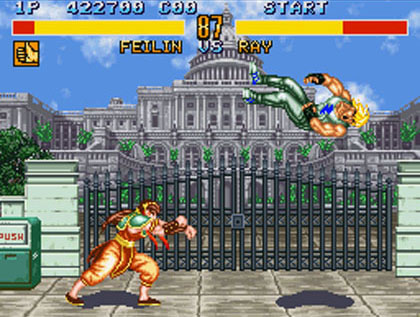
Fighter's History is all about doing more with less, which makes the game more thoughtful than one might expect. With nine playable characters, the 16-bit fighter doesn't have the selection of Samurai Shodown or Mortal Kombat II (though it easily has more depth than the latter). Some characters only have two special moves, so it's up to the player to find good combinations and strategies. In many cases, the special moves merely supplement the regular attacks. For example, projectiles are easier to counter than they are in Street Fighter games, so don't expect many fireball fights. In general, special moves don't carry as much priority in Fighter's History, though air throws and certain charging attacks (such as Ray's "Dynamite!") can be pesky.
Special moves might also prove to be less important due to Fighter's History innovation: Weak points. That is, developing strategies to attack an opponent's weak point might prove smarter than spamming special moves that can be easily blocked. The weak point varies from character to character - it can be a headband or even someone's shoes. If you strike an opponent's weak point enough, the article will start flashing and, if hit again, fly off. At this point, your opponent falls down and becomes dizzied. Once a weak point is exposed, a fighter can be knocked out quickly without good defense. Weak points create some interesting dynamics. For example, a character with a weak point on his or her head can be exploited by Samchay (the Sagat clone), whose standard grappling maneuver is repeated elbows to the head.
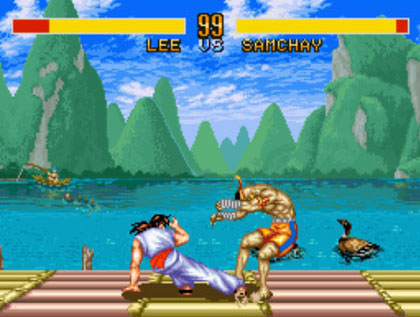
The similarities to Street Fighter II inspired a lawsuit, but they're fairly charming today. Not only does Fighter's History have a Ryu clone named Mizoguchi, but the music from Mizoguchi's stage is reminiscent of the music found in Ryu's level. At the same time, Mizoguchi feels like more of a bruiser than Ryu; his special uppercut, for instance, doesn't leave the ground. Even though Fighter's History is ultimately its own game, spotting and hearing all the bits from Street Fighter II is part of the fun. The references even show up in unexpected spots (Sagat's chant of "Tiger!" takes its place with Marstorious, the Zangief-esque wrestler from Italy).
This game doesn't push the limits of the Super NES in terms of graphics or sound, and its final boss is a Middle Eastern stereotype that can seem especially irresponsible in our post-9/11 landscape. But consider the philosophy of Fighter's History: Gameplay over everything else. It's a philosophy that many retro gamers will claim, yet Fighter's History remains a relatively forgotten fighter. The history book on classic fighting games needs revision.
Tighter gameplay separates Fighter's History from other Street Fighter II clones that didn't even get the foundation right. The special moves and combos in Fighter's History simply feel more responsive than the norm. The game isn't smoother than Capcom or SNK's best, but then again, what is?

Fighter's History is all about doing more with less, which makes the game more thoughtful than one might expect. With nine playable characters, the 16-bit fighter doesn't have the selection of Samurai Shodown or Mortal Kombat II (though it easily has more depth than the latter). Some characters only have two special moves, so it's up to the player to find good combinations and strategies. In many cases, the special moves merely supplement the regular attacks. For example, projectiles are easier to counter than they are in Street Fighter games, so don't expect many fireball fights. In general, special moves don't carry as much priority in Fighter's History, though air throws and certain charging attacks (such as Ray's "Dynamite!") can be pesky.
Special moves might also prove to be less important due to Fighter's History innovation: Weak points. That is, developing strategies to attack an opponent's weak point might prove smarter than spamming special moves that can be easily blocked. The weak point varies from character to character - it can be a headband or even someone's shoes. If you strike an opponent's weak point enough, the article will start flashing and, if hit again, fly off. At this point, your opponent falls down and becomes dizzied. Once a weak point is exposed, a fighter can be knocked out quickly without good defense. Weak points create some interesting dynamics. For example, a character with a weak point on his or her head can be exploited by Samchay (the Sagat clone), whose standard grappling maneuver is repeated elbows to the head.

The similarities to Street Fighter II inspired a lawsuit, but they're fairly charming today. Not only does Fighter's History have a Ryu clone named Mizoguchi, but the music from Mizoguchi's stage is reminiscent of the music found in Ryu's level. At the same time, Mizoguchi feels like more of a bruiser than Ryu; his special uppercut, for instance, doesn't leave the ground. Even though Fighter's History is ultimately its own game, spotting and hearing all the bits from Street Fighter II is part of the fun. The references even show up in unexpected spots (Sagat's chant of "Tiger!" takes its place with Marstorious, the Zangief-esque wrestler from Italy).
This game doesn't push the limits of the Super NES in terms of graphics or sound, and its final boss is a Middle Eastern stereotype that can seem especially irresponsible in our post-9/11 landscape. But consider the philosophy of Fighter's History: Gameplay over everything else. It's a philosophy that many retro gamers will claim, yet Fighter's History remains a relatively forgotten fighter. The history book on classic fighting games needs revision.
HOME |
CONTACT |
NOW HIRING |
WHAT IS DEFUNCT GAMES? |
NINTENDO SWITCH ONLINE |
RETRO-BIT PUBLISHING
Retro-Bit |
Switch Planet |
The Halcyon Show |
Same Name, Different Game |
Dragnix |
Press the Buttons
Game Zone Online | Hardcore Gamer | The Dreamcast Junkyard | Video Game Blogger
Dr Strife | Games For Lunch | Mondo Cool Cast | Boxed Pixels | Sega CD Universe | Gaming Trend
Game Zone Online | Hardcore Gamer | The Dreamcast Junkyard | Video Game Blogger
Dr Strife | Games For Lunch | Mondo Cool Cast | Boxed Pixels | Sega CD Universe | Gaming Trend
Copyright © 2001-2025 Defunct Games
All rights reserved. All trademarks are properties of their respective owners.
All rights reserved. All trademarks are properties of their respective owners.






